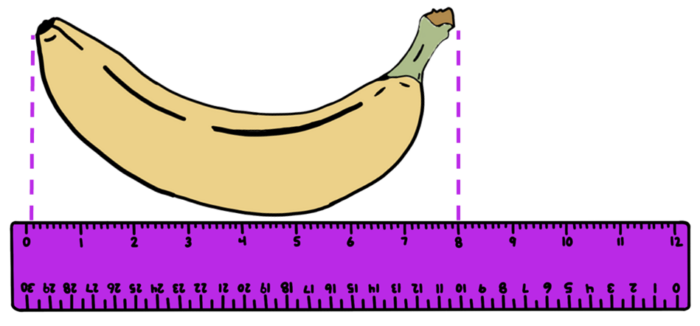Scales and Measurements
Page written by CSENND member Madison Edwards.
History of Measurements
Humans have always had a need for measuring different things, especially length. Length as defined by Merriam-Webster is the “distance or extent in space.” And a measurement is the action of finding the length of something. Measurements of length first started in ancient civilizations using one’s forearm, hand, or finger.

The Egyptian cubit and Mesopotamian cubit were the earliest known measurement of length which referred to the length of the forearm to the tip of the middle finger. The more common measurements of length now a days such as the inch, foot, and yard evolved from the cubit. For instance, the ancient Greek and Romans built on the Egyptian foot and created the Roman foot that was split into twelve unciae (unciae derived from the Latin word unus meaning “one”, leading to one uniciae being 1/12th of a Roman foot, similar to an inch in the imperial measuring system). The Roman foot was then expanded to the Roman mile (5000 feet) which was then taken up by England who modified the length to be 5280 feet. Further the yard was also derived from these ancient civilizations, with the origin of the yard believed to be a double cubit, or two forearm measurements.
Common Units
Ancient civilizations used their bodies to measure the lengths of different objects. In using their bodies, they were using non-standard units to measure length. In this way, the units do not have a fixed number; they will change from person to person. You can think of it like this: your arm is smaller than your parent’s arm, so if you are measuring a cubit, the distance between your elbow and the tip of your middle finger will be smaller than that of your parents. In this way a cubit unit will vary depending on the person measuring it. This leads to the development of a more standard unit of measuring length. Standard units of measurements can be broken down into two systems: metric and imperial.
Metric System
The metric system was developed around a unit of measurement known as the meter. This system includes units such as kilometer, hectometer, decameter, meter, decimeter, centimeter, and millimeter and is the current international standard system of units. The relationship between these units is a factor of ten, for instance as we move to the right each unit is ten times smaller than the unit to its left. And as we move to the left, the units are ten times larger than the unit on its right. For this, to move to the left you divide the current unit by ten; and to move to the right, you multiply the current unit by ten.

Here is a simple conversion chart for metric length units.

Notice here how there are three new units: micrometer, nanometer, and picometer. These go into the nanoscale, which is even smaller than the traditional metric units.
Imperial System
The imperial system was developed in England and includes units such as inch, foot, yard, and mile. Unlike the metric system, there is no direct relationship between the units. Rather, there are different relationships between each unit:

How to Measure with a Ruler
Rulers have units of inches on one side and centimeters/millimeters on the opposite side. Rulers are generally used to measure objects with shorter lengths, since most standard rulers are only 12 inches (1 foot) in length.

To use a ruler:
- Determine if you need to obtain the length in inches or centimeters/millimeters, this will tell you which side of the ruler to use.
- Find the 0 mark and line the 0 mark up with the edge of what you would like to measure.
- Find the mark that the object ends on, this is your length. For instance, if the object that you are trying to measure lands on the mark labeled “4 inches” then your object is 4 inches in length.
Here is an example:

Answer: This object is 8 inches in length.
Interested in measuring the length of objects yourself? Checkout these activities here.